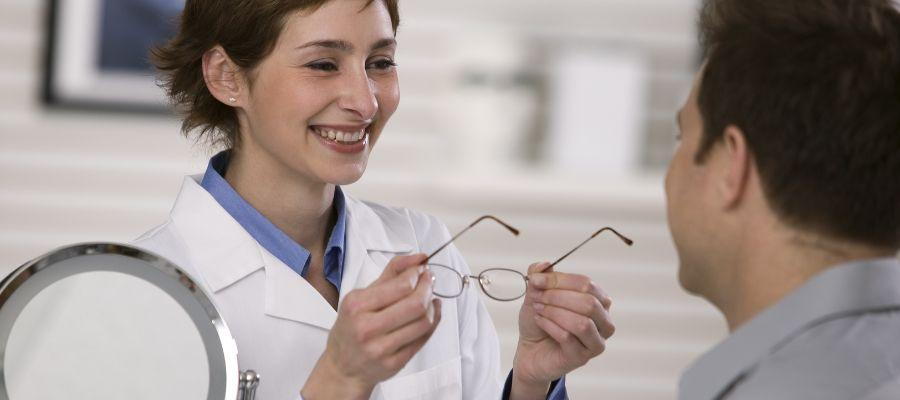
What Is The Eye Doctor Checking For During An Eye Exam?
In the throes of your routine visit to the eye doctor, have you ever pondered what exactly the doctor is checking during the examination? In this article, you’ll uncover exactly what Dr. Joseph Tegenkamp inspects during an eye exam at either of the 50 Dollar Eye Guy locations in Pensacola, Florida. Known for his friendly professionalism and commitment to providing top-notch service, Dr. Tegenkamp offers comprehensive eye exams aimed at ensuring optimal vision care. This piece speaks to, not just the ardent spectacle connoisseur, but every individual who values their eye health. So take this as your cue to join the 50 Dollar Eye Guy family and better understand why each test, each blink, and each question contribute to your total eye care.
Understanding the Basics of an Eye Exam
You may have heard that it's imperative to have regular eye exams but wondered exactly what it entails. This article helps unravel the elements involved in an eye exam, what each test means, and why they're essential in maintaining your eye health.
Definition of an Eye Exam
An eye exam is a series of tests performed by an eye care professional aimed at assessing your vision and checking for potential eye diseases. These tests range from simple ones, like reading an eye chart, to complex tests, such as using a high-powered lens to examine the health of your eye tissues.
Importance of Regular Eye Exams
Regular eye exams are a critical part of maintaining good health. They not only evaluate your vision requirement for glasses or contact lenses but also check your eyes for common diseases, evaluate how your eyes work together, and assess your eyes as an indicator of your overall health.
Visual Acuity Test
The first thing that might come to your mind when thinking of an eye exam is the visual acuity test. However, many may not fully understand its importance and purpose.
Purpose of a Visual Acuity Test
The purpose of a visual acuity test is to measure the sharpness of your vision. This test is typically performed using a projected eye chart for distance vision and a small handheld acuity chart for near vision.
Procedures Involved in a Visual Acuity Test
During a visual acuity test, you will usually be asked to read a series of random letters or numbers of various sizes from a distance. This is usually done one eye at a time, with your other eye covered, to get an accurate result for each eye.
Understanding the Results of a Visual Acuity Test
The results of your visual acuity test are usually expressed as a fraction. For instance, 20/20 vision indicates the clarity of your eye's vision at a distance of 20 feet compared to a normal sight. If your vision is 20/100, it means you must be as close as 20 feet to see what a person with normal vision can see at 100 feet.
Refraction Assessment
Refraction assessment is another essential part of an eye exam. It determines your level of hyperopia (farsightedness), myopia (nearsightedness), astigmatism (distorted vision), and presbyopia (age-related issues with seeing close objects).
Explanation of Refraction Assessment
Refraction is the bending of light as it passes through one object to another. A refractive error means that the shape of your eye doesn't bend light correctly, ultimately resulting in a blurred vision. That's why a refraction assessment is essential—it helps to determine the right lens power needed to compensate for any refractive error.
How a Refraction Assessment is Conducted
During a refraction assessment, an instrument called a phoropter is used. This device contains different lenses, and you'll be asked to look through a series of lenses in front of your eyes and describe which make your vision better or worse.
Interpreting the Results of a Refraction Assessment
The results of a refraction assessment are recorded as a series of numbers, typically separated by a cross or a dash, known as your prescription. These numbers give information about the power of the lens needed to correct your vision to normal.
Visual Field Test
A visual field test measures your peripheral (side) vision and your central vision. This test makes sure you're aware of objects on your side when looking straight ahead—an aspect crucial for tasks like driving.
Understanding the Importance of a Visual Field Test
A visual field test is essential because it can detect blind spots in your visual field, which could be indicative of certain eye diseases like glaucoma. The test measures the area around the point of central vision and identifies areas of sensitivity loss, which could be a sign of early disease.
Process of Conducting a Visual Field Test
During a visual field test, you'll be shown a line of letters or shapes and asked to keep your gaze fixed on a specific spot. Then, you'll be asked to respond whenever you see light in your peripheral vision.
What the Results of a Visual Field Test Mean
If you can see the light presented in your extreme peripheral vision, your visual field is normal. However, if you don't see the lights until they move closer to central vision, you might have a restricted visual field and should consult with your eye care professional.
Color Vision Testing
With the many nuances in our colorful world, testing your ability to discern different colors can be an eye-opening aspect of eye evaluations.
Significance of Color Vision Testing
Color vision testing is vital for diagnosing color blindness (color vision deficiency) and other eye health concerns. It's often conducted early in life, but adult color vision changes can signal various medical conditions including Parkinson's disease and diabetes.
Procedure for Color Vision Testing
In a color vision test, you'll often be presented with images composed of colored dots. You'll be asked to discern numbers or patterns within the dots, which vary in color and size. You might struggle to distinguish certain patterns if you're colorblind.
Interpreting the Outcomes of Color Vision Testing
Your ability to recognize the images or numbers from the colored dots chart can help your eye care professional determine if you have a color vision deficiency. The type and extent of color blindness can also be gauged based on which patterns were challenging for you.
Checking for Eye Health
It's essential to remember that an eye exam doesn't just evaluate your need for glasses or contacts—it's also about your overall eye health.
Eye Health in the Context of an Eye Exam
In the context of an eye exam, eye health refers to the condition of your eye tissues, and how well your eyes function together. Eye care professionals use various methods to evaluate your eye health process—from visually inspecting your eye to using special instruments.
Methods for Checking Eye Health
To assess your overall eye health, your eye doctor may use several tests. These include the slit-lamp exam (allows the doctor to see structures at the front of your eye), tonometry (measures eye pressure to check for glaucoma), and ophthalmoscopy (checks the health of your optic nerve, retina and blood vessels).
Understanding Results Approach to Eye Health
Unlike other parts of an eye exam, evaluating your eye health might not provide you with immediate numbers or results. Instead, your eye doctor typically discusses with you any potential issues found and provides recommendations for treatments or necessary follow-ups.
Glaucoma Testing
Glaucoma is a serious eye condition that can lead to vision loss without early detection and treatment. This makes glaucoma testing a crucial part of an eye exam.
The Role of Glaucoma Testing in an Eye Exam
During an eye exam, one of the main things your eye doctor checks for is glaucoma. Glaucoma testing helps identify increased eye pressure, which can lead to damaged optic nerves and vision loss.
Steps in Glaucoma Testing
The main test for glaucoma is called tonometry, which measures the pressure within your eye. The test involves numbing the eye with a drop and then gently pressing a small device against it. Other tests may include gonioscopy (examining the drain of your eye) and pachymetry (measuring corneal thickness).
Interpreting the Glaucoma Test Results
If your eye pressure is higher than normal or if your optic nerve has a certain appearance, you may be labelled as a ‘glaucoma suspect’. This means you need additional testing, close follow-ups, or even treatment.
Retina and Optical Nerve Examination
The back of your eye, where your retina and optic nerve reside, can also speak volumes about your eye health.
Importance of Retina and Optical Nerve Examination
By examining your retina and optic nerve, your eye care professional can ascertain signs of many conditions, like retinal detachment, glaucoma, and even non-eye diseases like diabetes and high blood pressure.
Conducting a Retina and Optical Nerve Examination
To examine your retina and optic nerve, your eye doctor may dilate your pupils and use a special tool called an ophthalmoscope. This allows them to see a broad view of the interior portion of your eyes in detail.
Deciphering the Results of a Retina and Optical Nerve Examination
Your eye doctor will look for any abnormalities in the colour, shape, or size of your optic nerve and retina. If such variations are discovered, further tests could be necessary to identify the cause.
Cornea and Lens Evaluation
Good vision isn’t only about your eye's ability to focus—it also involves the clearness of your cornea and lens.
Need for Cornea and Lens Evaluation
The cornea and lens of your eye help focus light, and any clouding or irregularity can lead to vision problems. Thus, examining them is necessary to ensure they’re clear and healthy.
How a Cornea and Lens Evaluation is Performed
Your eye doctor uses a slit lamp to examine your cornea and lens. The slit lamp is a binocular microscope that shines a high-intensity light into your eyes, allowing your doctor to examine these structures in detail.
Analyzing the Results of a Cornea and Lens Evaluation
After a detailed examination, your eye doctor will advise you on any detected abnormalities in your cornea or lens that might be affecting your vision. These issues can include conditions like cataracts or corneal ulcers.
Checking for Eye Diseases
Eye diseases can sneak up without warning and damage your precious vision. Regular eye exams can often detect these diseases in their early stages, giving you the opportunity to treat them before significant harm.
Common Eye Diseases Checked during an Eye Exam
Some of the eye diseases commonly checked during an eye exam include glaucoma, age-related macular degeneration, cataracts, and diabetic retinopathy.
Procedure for Checking Eye Diseases
Checking for eye diseases typically involves a series of specialized tests, which may include visual acuity tests, color vision tests, visual field tests, and inspection of the eye's interior structures.
Results Interpretation for Eye Disease Testing
If any abnormalities are found during the examination, your eye doctor will explain the findings to you and provide instructions for the next steps, which might involve further testing or treatment.
Now that you're familiar with the ins and outs of an eye exam, you should feel more at ease during your next appointment. Remember, an eye exam is not just about updating your glasses prescription—it's about safeguarding the health of your eyes. So don't skip your regular eye exams—your eyes will thank you for it!





